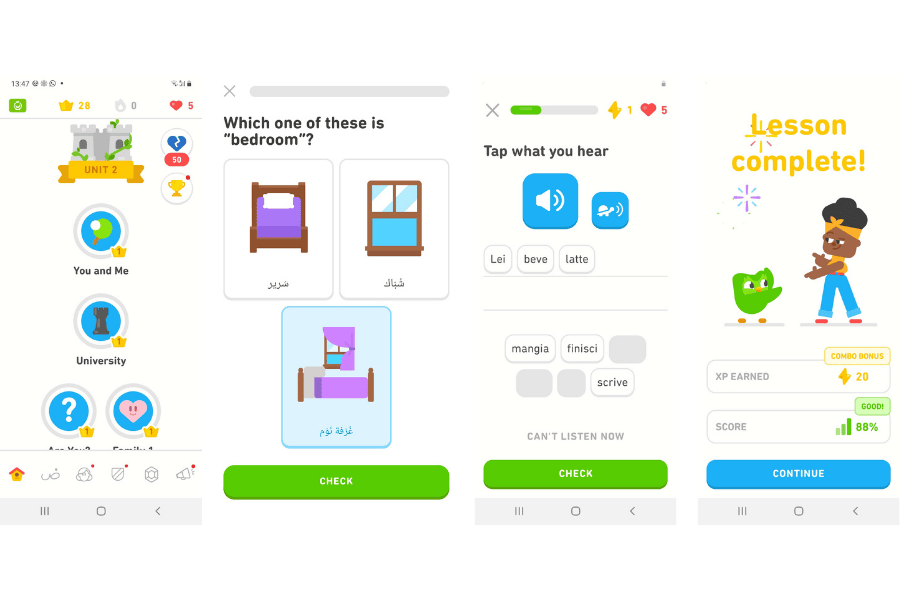DouLingo is a great example of gamification in education. Alex Bresler talks here about how it worked for her.
Duolingo’s latest conversation-based exercises work to remedy this practicality pitfall. A lot has changed since the first time I used the app. Lessons now guide readers down a “learning path” rather than a “learning tree.” The content is similar but with a greater focus on audio exercises, short stories, and “spaced repetition” to re-expose users to concepts throughout their study.
These new narrative exercises achieved something no textbook I’ve thumbed has been able to accomplish: familiarize me with the cadence of a language and ease the shock of conversation when it came to speaking out loud. Duolingo got me in the habit of reaching for French words rather than English ones, and it gave me the confidence to use them with native speakers.
“What Duolingo wants to do is give you a really solid foundation that you can take with you anywhere,” she explained when I’d asked how helpful the French course would be outside of France.
No language is static, Blanco explains, whether influenced by dialect or slang, like the “TikTok French” you might hear today. “So what’s really important is to build this flexible foundation so that when your super cool TikTok waiter at the Parisian cafe says something you don’t know, you can say in French, ‘Wait, wait, wait, what do you mean there.’ You can negotiate that way … with the vocabulary or context clues to be able to figure it out … in Quebec or Congo.”

So, in summary, does Duolingo actually work?
Duolingo works best as a tool for exposing users to new languages and holding them accountable for consistent practice, rather than as a tool for fluency. It’s a great resource for travelers looking to learn basic words and phrases to help them navigate foreign places, although genuine and lasting language-learning progress requires immersion. Audio exercises that familiarize users with the flow of conversation, and habit-forming gamification tactics such as lesson streaks and leaderboards, give users the confidence to flex their newfound skills with native speakers, which is where the real learning happens. Duolingo French always has the newest and most sophisticated lessons, followed by Spanish and English, so Duolingo works particularly well if you’re pursuing one of the app’s most popular courses.
[Bresler, Alex]
In this article the author touches on a point I think is interesting. She says “These new narrative exercises achieved something no textbook I’ve thumbed has been able to accomplish”.
She compares Duolingo to classic textbook learning and that Duolingo can teach something that no textbook she read ever did. Language is unpredictable and ever-changing, there are always new terms and slang that come about with every generation. Even the way people speak changes from generation to generation. What Duolingo succeeds in is giving the user a strong basis in which they can build and learn on the fly when practicing in conversation. This author describes Duolingo using a fun and interactive formula for learning. With daily streaks and incentives for you to practice every day. In what ways can learn from the learning strategies that Duolingo implements in their app? How can these general learning principles be adapted to help teach financial advice?
Bresler, Alex. “Does Duolingo Actually Work? I Went to Belgium after a 90-Day Lesson Streak to Find Out.” Matador Network, Matador Network, 21 Dec. 2022, matadornetwork.com/read/does-duolingo-actually-work/.




